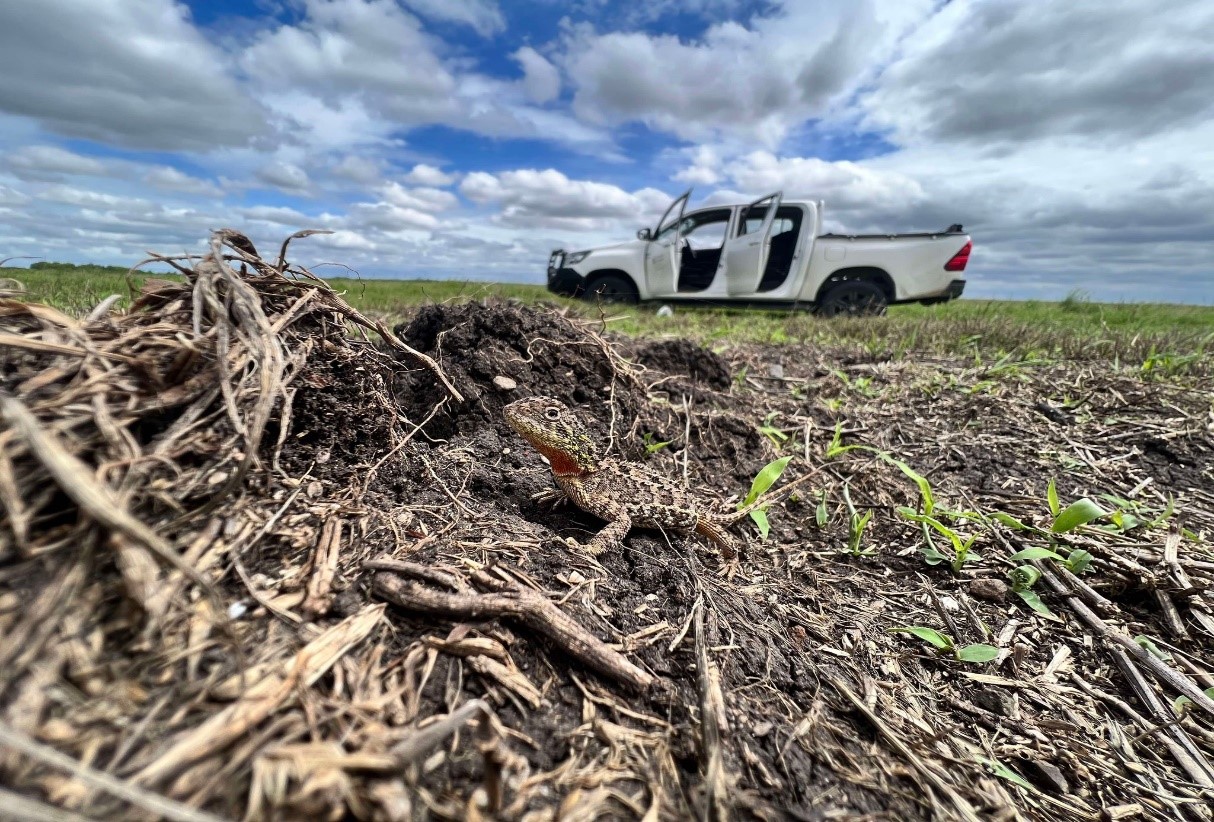Hidden Vale researchers work closely with other groups to help conserve the Condamine earless dragon (Tympanocryptis condaminensis) which is a small, endangered agamid lizard endemic to Queensland and restricted to the Condamine floodplain and surrounding areas, west of Toowoomba. Like others in the genus from Australian eastern grasslands, their habitat has been highly modified by agriculture and major road and rail projects. It was estimated that less than 5% of original habitat remained in 2016 when a conservation advice was issued, and the situation has only worsened since then. This species is one of Australia’s most imperilled reptiles, with almost no protected or unmodified habitat, yet despite these challenges, it has managed to persist on road verges and in cropped lands. This persistence is not reason for complacency, as the species is highly susceptible to imminent extinction.

T. condaminensis was recently ranked as the 13th most likely reptile species to become extinct by 2040, with the Tympanocryptis genus representing a quarter of the 20 most imperilled reptiles (Geyle et al., 2021). In a priority threat management report in 2016 the Condamine earless dragon was identified as one of the most at risk species of fauna in the brigalow belt region, facing a greater than a 50% chance of functional loss, and that given it is not feasible to halt all threatening processes that impact biodiversity persistence, strategic species-specific management responses are required (Ponce Reyes et al., 2016). Condamine earless dragons inhabit native grasslands which have been heavily modified by agriculture, leading to decline of almost all of their habitat. It only persists on road verges and privately owned agricultural land, which is a very precarious situation, making the species highly susceptible to imminent extinction.
The Victorian grassland earless dragon (T. pinguicolla) was believed to be extinct for 50 years until 2023, when they were rediscovered and rescued into the safety of captivity, which was expediated by proactive conservation actions taken years prior to establish an ex situ population of the Canberra grassland earless dragon (T. lineata).

